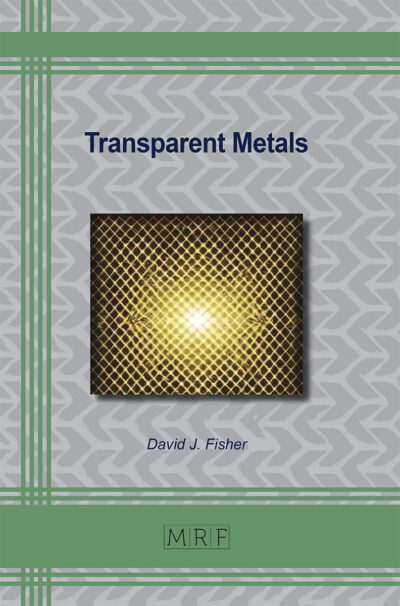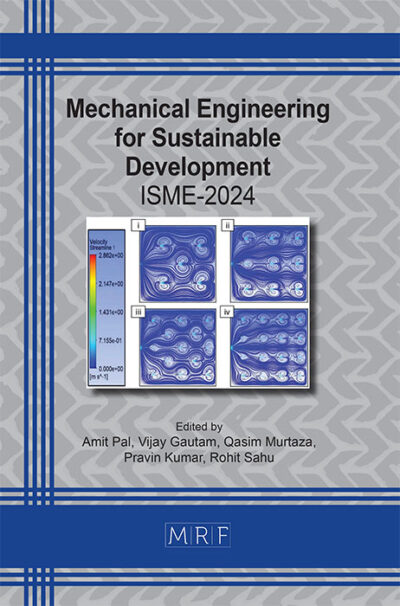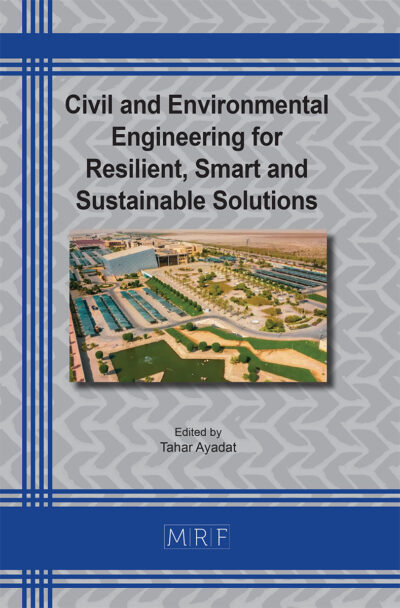Machine learning approaches for predicting ultimate tensile strength in 9% Cr steels
Seza DINIBUTUN, Yousef ALSHAMMARI, Jafarali PAROL, Leandro BOLZONI
Abstract. This paper applies machine learning techniques to analyze a dataset featuring the initial elemental composition and mechanical properties of various 9% chromium steels. Mechanical properties in the dataset are yield stress and tensile strength, elongation, and reduction in area. The primary objective is to predict the ultimate tensile strength of these steel alloys using different machine learning algorithms. The study involves preparing the dataset to make it suitable for machine learning algorithms, selecting relevant features, and implementing three different machine learning models to evaluate their performance. The performance of these models, namely linear regression, random forest, and support vector machines model, were compared to determine the most accurate and reliable method for predicting the ultimate tensile strength. Spearman’s rank correlation coefficient was performed to understand the influence of elemental composition on the ultimate tensile strength. This study was conducted using Python version 3.12.2. The objective is to demonstrate the potential of machine learning in decision-making in material science.
Keywords
Machine Learning, Linear Regression, Random Forest, Correlation Analysis, Chromium Steels, Tensile Strength
Published online 2/25/2025, 9 pages
Copyright © 2025 by the author(s)
Published under license by Materials Research Forum LLC., Millersville PA, USA
Citation: Seza DINIBUTUN, Yousef ALSHAMMARI, Jafarali PAROL, Leandro BOLZONI, Machine learning approaches for predicting ultimate tensile strength in 9% Cr steels, Materials Research Proceedings, Vol. 48, pp 501-509, 2025
DOI: https://doi.org/10.21741/9781644903414-55
The article was published as article 55 of the book Civil and Environmental Engineering for Resilient, Smart and Sustainable Solutions
![]() Content from this work may be used under the terms of the Creative Commons Attribution 3.0 license. Any further distribution of this work must maintain attribution to the author(s) and the title of the work, journal citation and DOI.
Content from this work may be used under the terms of the Creative Commons Attribution 3.0 license. Any further distribution of this work must maintain attribution to the author(s) and the title of the work, journal citation and DOI.
References
[1] C. Schroer, O. Wedemeyer, J. Novotny, A. Skrypnik, J. Konys, Performance of 9% Cr steels in flowing lead-bismuth eutectic at 450 and 550°C, and 10−6mass% dissolved oxygen, Nuclear Engineering and Design 280 (2014) 661-672. https://doi.org/10.1016/j.nucengdes.2014.01.023
[2] A. Shibli, F. Starr, Some aspects of plant and research experience in the use of new high strength martensitic steel P91, International Journal of Pressure Vessels and Piping 84(1) (2007) 114-122. https://doi.org/10.1016/j.ijpvp.2006.11.002
[3] M.H. Mobarak, M.A. Mimona, M.A. Islam, N. Hossain, F.T. Zohura, I. Imtiaz, M.I.H. Rimon, Scope of machine learning in materials research—A review, Applied Surface Science Advances 18 (2023) 100523. https://doi.org/10.1016/j.apsadv.2023.100523
[4] L. Song, D. Wang, X. Liu, A. Yin, Z. Long, Prediction of mechanical properties of composite materials using multimodal fusion learning, Sensors and Actuators A: Physical 358 (2023) 114433. https://doi.org/10.1016/j.sna.2023.114433
[5] C. Lv, X. Zhou, L. Zhong, C. Yan, M. Srinivasan, Z.W. Seh, C. Liu, H. Pan, S. Li, Y. Wen, Q. Yan, Machine Learning: An Advanced Platform for Materials Development and State Prediction in Lithium-Ion Batteries, Advanced Materials 34(25) (2022). https://doi.org/10.1002/adma.202101474
[6] Z.M. Fadlullah, F. Tang, B. Mao, N. Kato, O. Akashi, T. Inoue, K. Mizutani, State-of-the-Art Deep Learning: Evolving Machine Intelligence Toward Tomorrow’s Intelligent Network Traffic Control Systems, IEEE Communications Surveys and Tutorials 19(4) (2017) 2432-2455. 10.1109/COMST.2017.2707140
[7] M. Jimenez Martinez, M. Alfaro Ponce, C. Muñoz, Design of an Aluminum Alloy Using a Neural Network-Based Model, Metals 12 (2022) 1587. https://doi.org/10.3390/met12101587
[8] B.L. DeCost, T. Francis, E.A. Holm, Exploring the microstructure manifold: Image texture representations applied to ultrahigh carbon steel microstructures, Acta Materialia 133 (2017) 30-40. 10.1016/j.actamat.2017.05.014
[9] C. Zou, J. Li, W.Y. Wang, Y. Zhang, D. Lin, R. Yuan, X. Wang, B. Tang, J. Wang, X. Gao, H. Kou, X. Hui, X. Zeng, M. Qian, H. Song, Z.K. Liu, D. Xu, Integrating data mining and machine learning to discover high-strength ductile titanium alloys, Acta Materialia 202 (2021) 211-221. https://doi.org/10.1016/j.actamat.2020.10.056
[10] G. Kim, H. Diao, C. Lee, A.T. Samaei, T. Phan, M. de Jong, K. An, D. Ma, P.K. Liaw, W. Chen, First-principles and machine learning predictions of elasticity in severely lattice-distorted high-entropy alloys with experimental validation, Acta Materialia 181 (2019) 124-138. https://doi.org/10.1016/j.actamat.2019.09.026
[11] S. Guo, J. Yu, X. Liu, C. Wang, Q. Jiang, A predicting model for properties of steel using the industrial big data based on machine learning, Computational Materials Science 160 (2019) 95-104. https://doi.org/10.1016/j.commatsci.2018.12.056
[12] M.V. Carneiro, T.T. Salis, G.M. Almeida, A.P. Braga, Prediction of Mechanical Properties of Steel Tubes Using a Machine Learning Approach, Journal of Materials Engineering and Performance 30(1) (2021) 434-443. https://doi.org/10.1007/s11665-020-05345-0
[13] Y. Zhang, X. Xu, Machine Learning Steel Ms Temperature, SIMULATION 97(6) (2021) 383-425. https://doi.org/10.1177/0037549721995574
[14] J. Xiong, T. Zhang, S. Shi, Machine learning of mechanical properties of steels, Science China Technological Sciences 63(7) (2020) 1247-1255. https://doi.org/10.48550/arXiv.2003.01943
[15] F. Yan, K. Song, Y. Liu, S. Chen, J. Chen, Predictions and mechanism analyses of the fatigue strength of steel based on machine learning, Journal of Materials Science 55(31) (2020) 15334-15349. https://doi.org/10.1007/s10853-020-05091-7
[16] X. Wang, Y. Liu, H. Xin, Bond strength prediction of concrete-encased steel structures using hybrid machine learning method, Structures 32 (2021) 2279-2292. https://doi.org/10.1016/j.istruc.2021.04.018
[17] T. Shafighfard, F. Kazemi, N. Asgarkhani, D.-Y. Yoo, Machine-learning methods for estimating compressive strength of high-performance alkali-activated concrete, Engineering Applications of Artificial Intelligence 136 (2024) 109053. https://doi.org/10.1016/j.engappai.2024.109053
[18] D.K. Ismael Jaf, A. Abdalla, A.S. Mohammed, P.I. Abdulrahman, K. Rawaz, A.A. Mohammed, Hybrid nonlinear regression model versus MARS, MEP, and ANN to evaluate the effect of the size and content of waste tire rubber on the compressive strength of concrete, Heliyon 10(4) (2024) e25997. https://doi.org/10.1016/j.heliyon.2024.e25997
[19] M.H.R. Sobuz, L.P. Joy, A.S.M. Akid, F.S. Aditto, J.A. Jabin, N.M.S. Hasan, M.M. Meraz, M.K.I. Kabbo, S.D. Datta, Optimization of recycled rubber self-compacting concrete: Experimental findings and machine learning-based evaluation, Heliyon 10(6) (2024) e27793. https://doi.org/10.1016/j.heliyon.2024.e27793
[20] K.A. Rozman, Ö.N. Doğan, R. Chinn, P.D. Jablonksi, M. Detrois, M.C. Gao, Dataset for machine learning of microstructures for 9% Cr steels, Data in Brief 45 (2022) 108714. https://doi.org/10.1016/j.dib.2022.108714
[21] Z. Pei, K.A. Rozman, Ö.N. Doğan, Y. Wen, N. Gao, E.A. Holm, J.A. Hawk, D.E. Alman, M.C. Gao, Machine-Learning Microstructure for Inverse Material Design, Advanced Science 8(23) (2021) 2101207. https://doi.org/10.1002/advs.202101207
[22] S.S. Shapiro, M.B. Wilk, An Analysis of Variance Test for Normality (Complete Samples), Biometrika 52(3/4) (1965) 591-611. https://doi.org/10.2307/2333709
[23] D.W. Gareth James, Trevor Hastie, Robert Tibshirani, Jonathan Taylor, An Introduction to Statistical Learning, with Applications in Python, Springer Cham2023. https://doi.org/10.1007/978-3-031-38747-0
[24] L. Breiman, Random Forests, Machine Learning 45(1) (2001) 5-32. https://doi.org/10.1023/A:1010933404324












